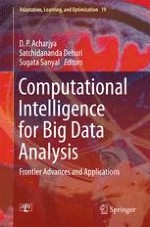The work presented in this book is a combination of theoretical advancements of big data analysis, cloud computing, and their potential applications in scientific computing. The theoretical advancements are supported with illustrative examples and its applications in handling real life problems. The applications are mostly undertaken from real life situations. The book discusses major issues pertaining to big data analysis using computational intelligence techniques and some issues of cloud computing. An elaborate bibliography is provided at the end of each chapter. The material in this book includes concepts, figures, graphs, and tables to guide researchers in the area of big data analysis and cloud computing.
